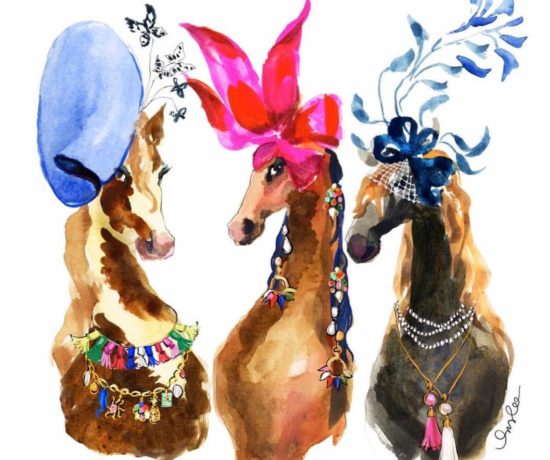Day 8 of the 8 most popular diets today according to Medical News Today.
Raw food dieters believe that eating a high proportion of raw foods makes them healthier.
Some raw foodists are vegan, and they consume no foods of animal origin. Others eat raw meat and raw animal products.
Weight loss is not the main aim of the raw food diet, but it is possible.
Contents of this article:
- Types of raw foods diet
- Benefit
- Risks
- Should I try the raw food diet?
Types of raw food diet
![[Raw food diet contains uncooked vegetables, fruits and juices]](https://cdn1.medicalnewstoday.com/content/images/articles/007/7381/raw-food-diet-contains-uncooked-vegetables-fruits-and-juices.jpg)
There are four broad types of raw food diets.
- Raw vegetarians eat plant-based foods plus eggs and dairy products
- Raw vegans eat no animal products at all
- Raw omnivores eat both plant-based and animal-based foods
All of these people eat mainly raw food. A raw carnivore eats meat but not cooked meat.
What can I eat?
The following foods are suitable for the raw food diet:
- soaked and sprouted beans, grains, and legumes
- dried fruits
- raw nut butter
- fresh fruits and raw vegetables
- freshly made fruit and vegetable juices
- milk from a young coconut
- nut milk
- raw nuts and seeds
- purified water, but not tap water
- seaweeds
- sun-dried fruits
- green food powder, for example, dried wheatgrass or algae
- other organic, natural, or unprocessed foods
- fermented foods, such as kimchi and sauerkraut
Depending on the type of diet, a raw food diet may also contain:
- eggs
- fish, for example, sushi or sashimi
- meat
- milk and dairy products, but these should be non-pasteurized and non-homogenized
Foods to avoid include:
![[Olives not always part of raw food diet]](https://cdn1.medicalnewstoday.com/content/images/articles/007/7381/olives-not-always-part-of-raw-food-diet.jpg)
- all cooked or processed foods
- refined oils
- table salt
- refined sugars and flour
- coffee, tea, and alcohol
- pasta
Olives are bitter if eaten raw. However, on a raw food diet olives can be eaten if they are raw and sun-cured. Salt preserves most olives, and olives in cans are often cooked.
Different people have different interpretations of the raw food diet and what it means. Some people will eat some cooked food, while others eat none. For some people, it is a way of life. For others, it is simply a dietary choice.
Preparing the food
A raw foodist prepares food in a special way.
The only heating that is allowed is with a dehydrator. This blows hot air through the food. The temperature is never above 116 Fahrenheit, or 46 degrees Celsius. Raw foodists also may also blend and chop up their foods.
- Grain and bean seeds are eaten soaked and sprouted rather than whole
- Nuts can be soaked, and some fruits are dried
- Many fruits and vegetables are juiced or used in smoothies
Sample meals include:
- breakfast: fruit with dehydrated seeds
- snack: green smoothie
- lunch: apple and nut salad
- dinner: stuffed Portobello mushrooms
Chocolate chip cookies can be made by grinding cashews and oats in a blender to make a dough, mixing coconut oil, carob, and cocoa powder to make chocolate chips, and then combining the mixtures and freezing for 30 minutes.
Other ingredients that can be used to make cookies include nut butter, coconut flakes, and dates.
Raw foodists claim that consuming mainly uncooked foods can lead to weight loss.
![[weight loss on the raw food diet]](https://cdn1.medicalnewstoday.com/content/images/articles/007/7381/weight-loss-on-the-raw-food-diet.jpg)
Cutting out processed food means many new raw food dieters will probably lose weight at first.
They also believe that with a raw food diet, the body is better able to prevent and fight diseases, especially chronic diseases.
Some nutrients, for example, water-soluble vitamins B and C, are reduced or destroyed by cooking, so eating food raw ensures a better supply of these.
This, they say, is because raw and living foods contain essential food enzymes. Heating the food to above 116 degrees Fahrenheit, or 47 degrees Celsius, destroys these food enzymes.
Raw foodists maintain that enzymes are the life force of a food. Nature has given each food its unique perfect mix. These vital enzymes allow us to fully digest our foods without having to rely on our own digestive enzymes.
Scientific research has not yet confirmed this.
Raw food dieters argue that the cooking process destroys or alters these enzymes, as well as essential vitamins and minerals. Only raw food, they say, is “live” food.
Cooked foods, they say, take longer to digest, and they clog up the digestive system and arteries with partially digested fats, proteins, and carbohydrates.
Raw food dieters maintain that a person on the diet will experience:
- more energy
- clearer skin
- better digestion
- weight loss
- a lower risk of developing heart and cardiovascular disease
Studies have indicated that a plant-based diet (but not necessarily raw) can lead to weight loss and reduce the risk of cardiovascular disease, cancer, obesity and type 2 diabetes.
Risks
Nutritionists and dietitians suggest that raw food dieters should consume the following foods with caution:
![[Some raw foods contain toxins]](https://cdn1.medicalnewstoday.com/content/images/articles/007/7381/some-raw-foods-contain-toxins.jpg)
Buckwheat: the greens are toxic when raw. If juiced or eaten in large amounts they can be toxic for people with fair skin. Buckwheat contains fagopyrin. This can trigger photosensitivity and other skin problems.
Kidney beans: these contain a chemical called phytohaemagglutinin. Raw kidney beans and kidney bean sprouts may be toxic.
Alfalfa sprouts: they contain the toxin canavanine
Cassava: some types may be toxic, including cassava flour.
Pea seeds: of the Lathyrus type, including grass pea, Khesari dhal, or almorta may cause a neurological weakness of the lower limbs if eaten raw. This is known as lathyrism.
Apricot kernels: these contain amygdalin, which contains cyanide.
Parsnips: these contain furanocoumarin, a chemical produced by plants as a defence mechanism against predators. Many furanocoumarins are toxic.
Raw eggs: salmonella bacteria is present in some eggs, and it can cause serious illness and even death. Cooking eggs kill the bacteria.
Meat: eaten raw, this can pass on harmful bacteria, parasites, and viruses.
Milk: Raw milk may contain Mycobacteria bovis (M. bovis), which can cause non-pulmonary tuberculosis (TB).
Some vegetables may be more beneficial when cooked. Cooking tomatoes, for example, makes the antioxidant lycopene available to the consumer’s body, according to researchers from Cornell University. However, cooking also destroyed vitamin C.
Should I try the raw food diet?
Anecdotal evidence suggests that people on the raw food diet may experience clearer skin, more energy, sustained weight loss, and a reduction in cholesterol and lipid levels in blood tests.
![[Raw food diet should]](https://cdn1.medicalnewstoday.com/content/images/articles/007/7381/raw-food-diet-should-i.jpg)
However, the diet has some disadvantages:
- Motivation can be hard to keep up, especially when socializing and eating out.
- Digestive problems can arise, such as irritable bowel syndrome (IBS), but this may improve after a while.
- Weight loss may not benefit everyone, and some people will have to work hard to keep up the number of calories they need.
- Cooking kills some toxins, bacteria, and harmful compounds in food. Raw animal products should be eaten with caution, as should some legumes, such as kidney beans.
- It requires a lot of discipline, organization, and preparation to ensure an adequate intake of essential nutrients.
A raw-food vegan is at risk of not getting enough of some nutrients, including protein, vitamin B12, iron, calcium, fatty acids, and vitamin D.
One study found that raw food vegetarians may have lower bone mass, although their bones appeared to be otherwise healthy.
Another found that a raw food diet can reduce overall cholesterol and triglycerides, but that it may lower the levels of HDL, or “good” cholesterol, and that it may raise levels of homocysteine, or tHcy, because of a lack of vitamin B12.
High levels of tHcy can increase the risk of cardiovascular problems.
Most dietitians would agree, however, that an increased intake of fruits and vegetables and a reduction in processed food would benefit most people.






No Comments